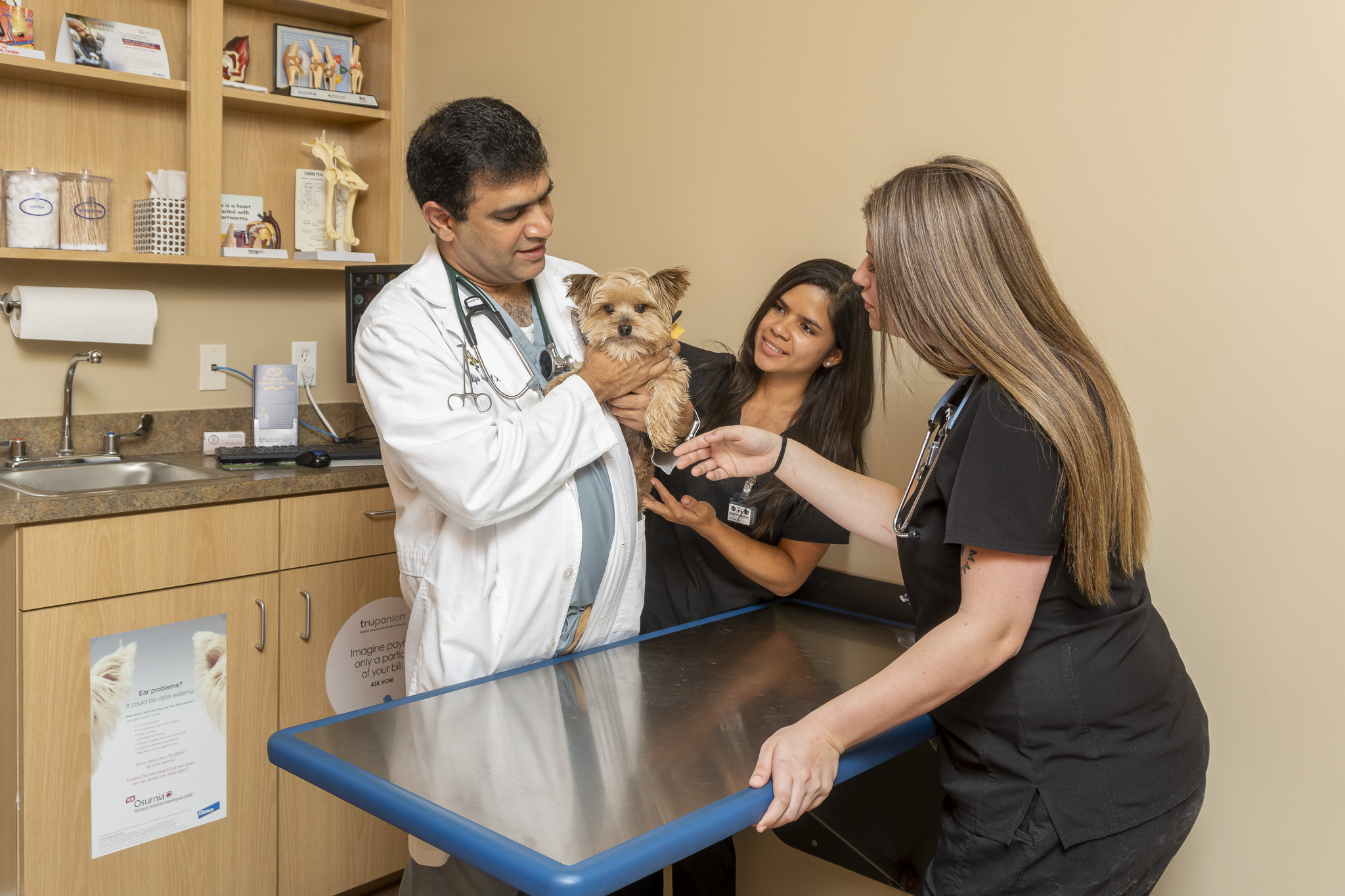
We're here for you
Emergency?
If your pet is exhibiting concerning symptoms or experiencing a medical emergency, please call our clinic at (407) 352-2579. We’ll help you through it.

Pale gums in cats and dogs could be a sign of various health issues. It might indicate a lack of oxygen in the blood or a decrease in red blood cells. Conditions like anemia, internal bleeding, or certain diseases could be the culprit. It's crucial to consult with a vet if you notice such changes in your furry friend. They'll be able to conduct tests and determine the underlying cause, ensuring your pup gets the care they need.
Health Conditions in Pets That Can Cause Pal Gums
Typically, pale gums are a sign that there is a decrease in red blood cells, which can be a symptom of a number of different health problems in pets. The following is a list of health conditions in pets that could lead to pale gums:
- Anemia: A decrease in red blood cells, whether due to blood loss, nutritional deficiencies, or other factors.
- Internal Bleeding: Occurs when there is bleeding inside the body, which may not be immediately visible.
- Parasitic Infections: Certain parasites, such as hookworms, can cause internal bleeding and anemia.
- Autoimmune Diseases: Conditions where the immune system attacks the body's own cells, including red blood cells.
- Chronic Kidney Disease: Impaired kidney function can lead to anemia and pale gums.
- Liver Disease: Liver disorders can affect blood clotting and lead to bleeding, causing pale gums.
- Infections: Serious infections, especially those affecting the blood, can result in anemia.
- Cancer: Some cancers can lead to anemia and pale mucous membranes.
- Toxin Ingestion: Ingesting certain toxins or medications can impact blood cell production.
- Heart Problems: Conditions affecting the heart's ability to pump blood efficiently may lead to poor oxygenation.
Remember, if you notice pale gums in your pet, it's essential to seek veterinary attention promptly for a proper diagnosis and appropriate treatment.
What To Do If Your Pet Has Pale Gums
If you notice that your pet has pale gums, you should take action quickly. Pale gums typically indicate a health problem that you’ll want to get treated as soon as possible. The first thing you should do is seek veterinary care for your pet.
Step #1
Monitor Your Pet’s Other Symptoms?
Pale gums usually don’t occur alone. There are most likely other symptoms that can give you a clue as to what is wrong with your pet. Although you should avoid self-diagnosing your pet, information about what other symptoms they’re displaying will be useful to the professional veterinarian treating your pet.
Step #2
Keep an Eye on Your Pet’s Vital Signs
Some health conditions that cause pale gums, such as toxin ingestion, can be life-threatening. If you notice worrying symptoms, such as difficulty breathing or other signs of distress, take your pet to the emergency vet.
Step #3
Don’t Self-Diagnose Your Pet
In some ways, you’re the expert on your pet. You’re the one who can recognize if your pet’s behavior has changed or if they’re breathing differently than normal. However, it’s important to leave the actual diagnosis to your vet. They’ll have the knowledge, experience, and tools to diagnose the health condition causing pale gums.
Step #4
Take Your Pet to the Vet
The first thing you should do if you notice pale gums in your pet is to schedule an appointment with your veterinarian. Your vet will be able to examine your pet and run diagnostics that you wouldn’t be able to. Your vet can also recommend treatments, prescribe medication, and more should the need arise.
Step #5
Follow Your Vet’s Treatment Plan
Once you have a diagnosis from your vet, you’ll need to follow their prescribed treatment plan. Depending on the cause of the pale gums, this could involve medication, a change in diet, or some other treatment.
Ask Your Vet Why Your Pet’s Gums Are Pale
Remember, pale gums can be a symptom of various underlying conditions, and a veterinarian is best equipped to determine the cause and provide appropriate care for your pet. Don’t hesitate to contact your vet if you have any questions or concerns about your pet’s health.

Step One:
Call us to book your pet’s appointment.

Step Two:
Our expert vet will take care of all of your pet’s needs.

Step Three:
Get back to enjoying your happy and healthy life with your furry best friend.

Get the Best Care for Your Pet
Come Visit Dr. Qasim
Book your pet’s appointment with Dr. Qasim to ensure a long, happy life together.

We love and care for each patient as if they were our own pet.
Meet Our Team of Animal Lovers
Dr. Bilal Qasim, DVM, established Dr. Phillips Animal Hospital in 2011 after practicing veterinary medicine for over 17 years with the help of talented and caring veterinary technicians.


